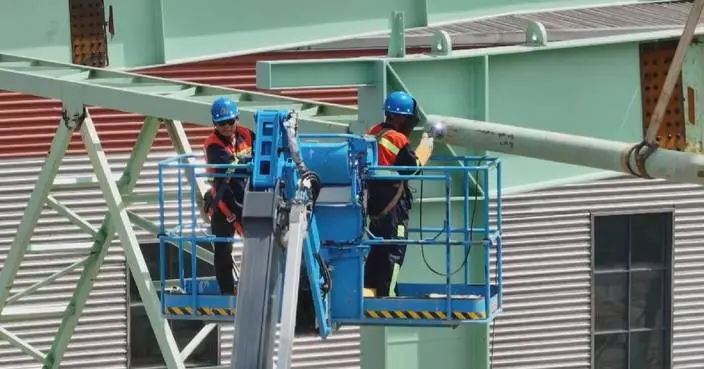The China National Space Administration announced on Thursday that two new satellites launched in 2022 for atmosphere and ecosystem observation have been officially put into operation, advancing the country’s goal of achieving zero-carbon emissions.
The satellites feature cutting-edge technologies for environmental monitoring, including high-precision atmospheric remote sensing using active laser detection methods. As part of China's civilian space infrastructure, the orbiting pair demonstrates the country's commitment to peaking carbon emissions by 2030 and achieving carbon neutrality by 2060.
"The atmospheric environmental surveyor satellite is equipped with an advanced aerosol and carbon detection lidar, which is one of the leading payloads in the world. It can continuously detect column-averages of carbon dioxide in the atmosphere, functioning both day and night, which greatly enhances its efficiency," said Meng Lingjie, director of the Earth Observation System and Data Center at the administration.
The other satellite, named Goumang after the ancient Chinese god of forestry and spring, focuses on terrestrial ecosystem carbon inventory. It employs innovative remote sensing techniques to assess forest stock, biomass, and carbon storage, supporting applications in agriculture and vegetation monitoring.
The operation of these two satellites marks a significant milestone in China's space capabilities and its efforts towards environmental sustainability.

China's two new satellites for atmosphere, ecosystem observation put into operation
China’s first intelligent field plant phenotype precision identification platform went into operation recently in Sanya City, south China’s Hainan Province, which is a milestone in the country’s development of intelligent breeding.
The phenotype of a plant is a term used to describe observable characteristics of the plant, such as its appearance, and some inherent physiological characteristics, such as resistance to drought and diseases.
In an experimental field of the National Nanfan Research Institute of the Chinese Academy of Agricultural Sciences, a large piece of equipment is moving across the field. The equipment, called the field plant phenotype precision identification platform, can move according to the preset track and can be remotely controlled. While moving, the equipment can scan the plants with its six sensors, just like a CT machine for plants.
"The ultimate goal is to achieve high-throughput, large-scale, efficient and precise collection of germplasm resources, which can be four to five times higher than the efficiency of the traditional manual collection," said Jin Xiuliang, a researcher at the institute.
Although the equipment looks simple from the outside, it contains six high-precision image acquisition devices such as multi-spectral, thermal infrared, and chlorophyll fluorescence devices. Data can be collected at fixed times and points according to experimental needs, and the collection of a germplasm material can be completed within 30 seconds.
After the data collected through this platform is transmitted to the data analysis center, researchers can more quickly and accurately screen out germplasm resources with excellent traits, laying the foundation for subsequent crop breeding.
"The plant phenotype identification facility at the National Nanfan Research Institute is a milestone in the field of crop science in China. It can greatly enhance the independent innovation capabilities of germplasm innovation, gene mining, and variety breeding, and enhance the international competitiveness of China's seed industry," said Li Huihui, vice president of the institute.

China makes major progress in smart crop breeding










